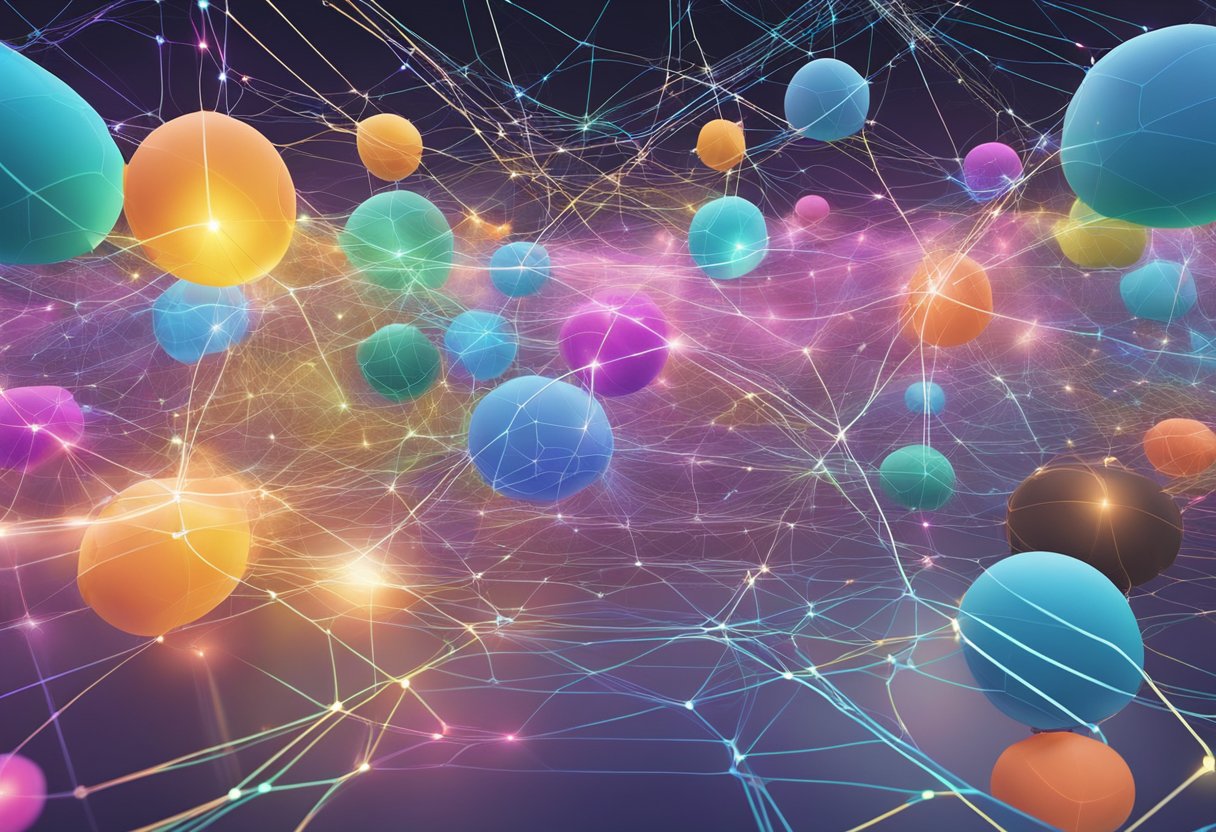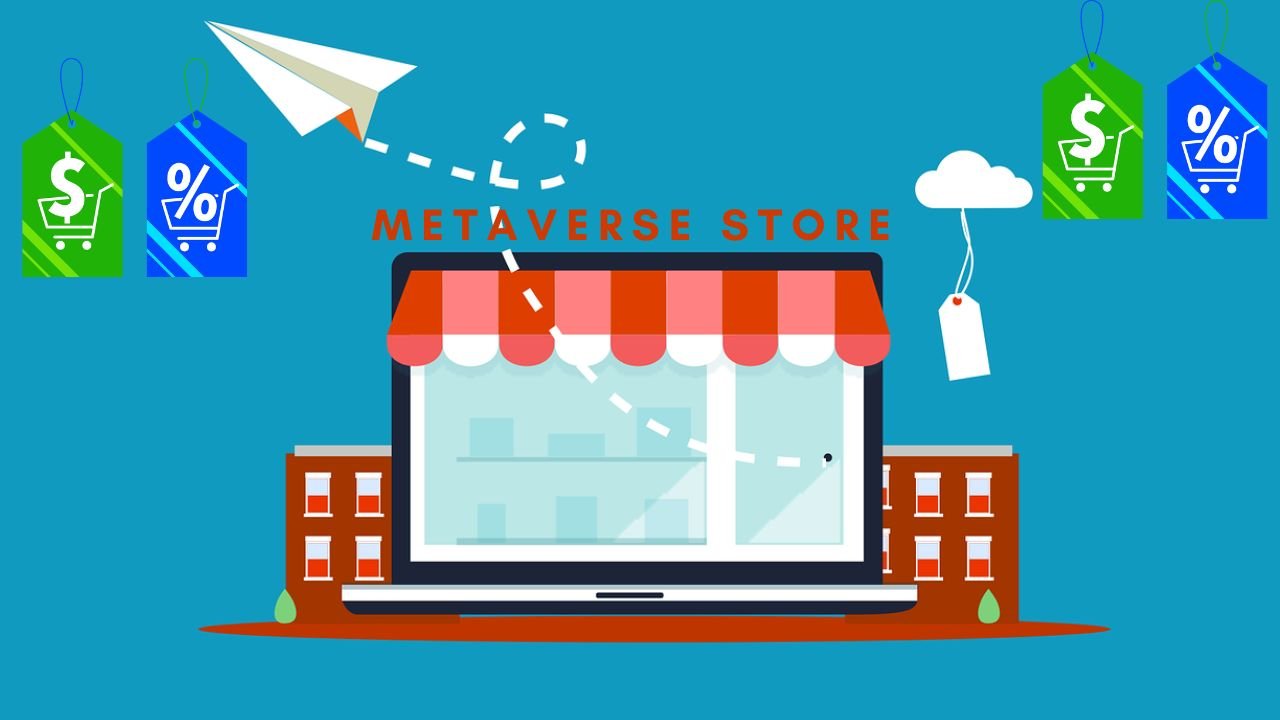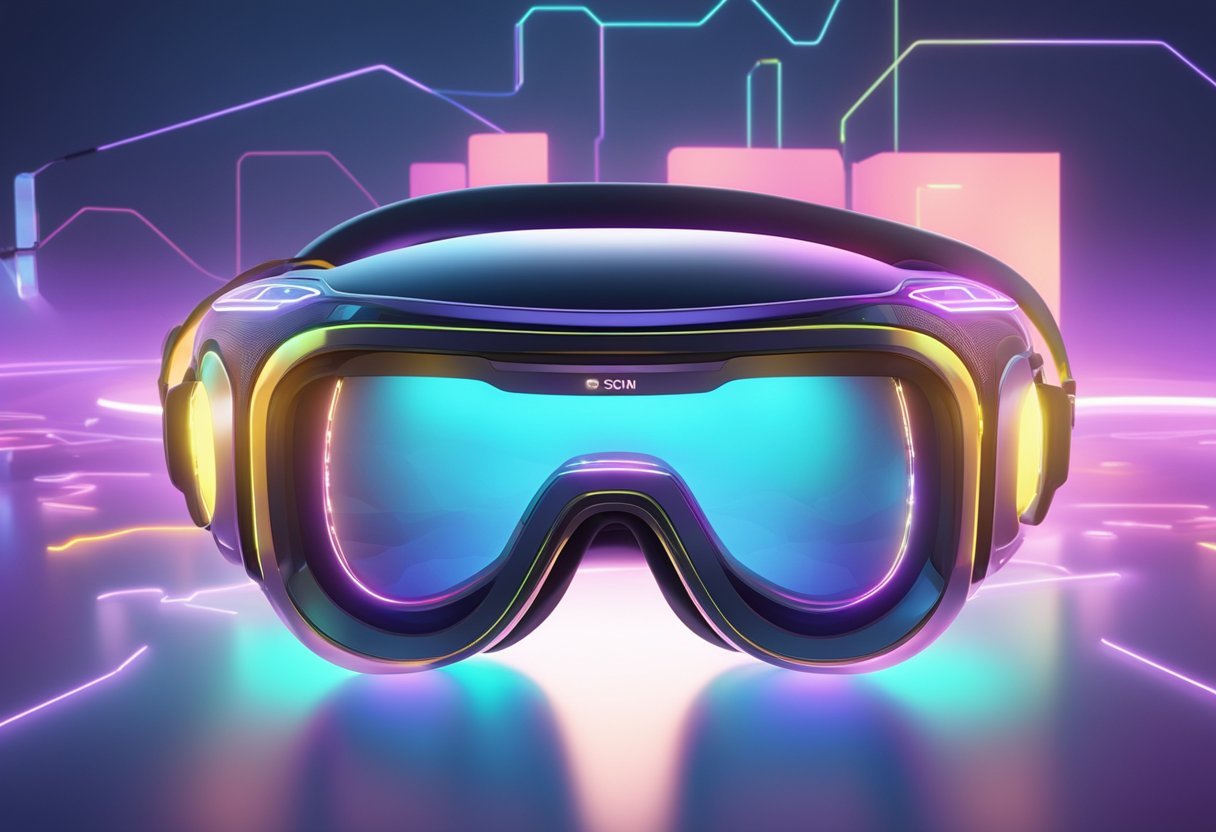The concept of the metaverse has been around for decades, but it is only recently that it has gained significant attention and hype. The metaverse is a virtual world that is created by the convergence of physical and digital spaces. It is an immersive experience that allows users to interact with each other and the environment in a way that is similar to the real world. The seven layers of the metaverse are a framework that explains the different components that make up the metaverse.
The 7 Layers of Metaverse
Metaverse is a virtual universe that is being developed as an extension of the internet, and it comprises seven fundamental layers dedicated to the framework of the structure, output, and ethical framework of an idealized decentralized metaverse. These seven layers are Infrastructure, Experience, Discovery, Creator Economy, Spatial Computing, Decentralization, and Human Interface.
| Layer | Description | Key Features |
|---|---|---|
| Infrastructure | The underlying technological foundation that supports the metaverse, including cloud computing, blockchain, and networking. | High-speed internet, data centers, edge computing, blockchain networks |
| Experience | The immersive digital environments that users interact with in the metaverse, including virtual worlds, augmented reality experiences, and games. | 3D graphics, real-time rendering, multi-sensory experiences, social interaction |
| Discovery | The tools and platforms that help users find and explore content and experiences in the metaverse. | Search engines, recommendation systems, social networking features, curated collections |
| Creator Economy | The economic system that allows creators to build and monetize their work within the metaverse, through tools and platforms for developing and selling virtual assets and experiences. | NFTs, marketplaces, microtransactions, subscriptions, virtual currencies |
| Spatial Computing | The technologies that enable users to interact with the metaverse in a natural and intuitive way, including virtual reality, augmented reality, and motion capture. | VR headsets, AR glasses, haptic feedback, spatial audio, motion tracking |
| Decentralization | The goal of moving away from centralized control of the metaverse and towards a more open and distributed system, where users have more ownership and control over their data and experiences. | Blockchain technology, decentralized applications, open-source software, user-owned data |
| Human Interface | The ways in which users interact with the metaverse, including avatars, voice commands, and gesture recognition. | Avatars, natural language processing, voice recognition, gesture recognition, haptic feedback |
Infrastructure
The Infrastructure layer is the foundation of the metaverse, and it involves the hardware, software, and networks that enable the metaverse to operate. It includes cloud computing, 5G networks, the Internet of Things (IoT), and security systems that ensure the safety of users’ data.
Experience
The Experience layer is the layer where users interact in digitally-driven settings via content such as gaming, shopping, NFTs, e-sports, and theater. The metaverse is more than just a 3D representation of reality; it will be the ultimate dematerialized version of physical space, objects, and distance.
Discovery
The Discovery layer is the layer that helps users find and explore new experiences in the metaverse. It includes search engines, recommendation engines, and other discovery tools that help users find new content and experiences.
Creator Economy
The Creator Economy layer is the layer that enables users to create and monetize content in the metaverse. It includes tools for content creation, distribution, and monetization, such as blockchain-based NFTs, smart contracts, and other decentralized technologies.
Spatial Computing
The Spatial Computing layer is the layer that enables the metaverse to create realistic and immersive environments. It includes technologies such as virtual reality (VR), augmented reality (AR), and mixed reality (MR) that enable users to interact with the virtual world in a more natural and intuitive way.
Decentralization
The Decentralization layer is the layer that ensures the metaverse is decentralized and democratic. It includes blockchain technology, which enables the creation of decentralized applications (dApps) that can be used to create and manage decentralized organizations, marketplaces, and other services.
Human Interface
The Human Interface layer is the layer that enables users to interact with the metaverse in a natural and intuitive way. It includes technologies such as voice recognition, gesture recognition, and other natural user interfaces that enable users to interact with the virtual world in a more natural and intuitive way.
The seven layers of the metaverse are critical to the development of a decentralized virtual universe that is safe, secure, and democratic. Each layer plays a critical role in the development of the metaverse, and it is essential to understand how they work together to create a seamless and immersive experience for users.
Creation and Economy
Creator Economy and Content
The Creator Economy layer is where content creators thrive in the decentralized metaverse. This layer is the foundation of community-driven content and the Creator Era. Blockchain technology and smart contracts enable creators to monetize their content directly.
This layer provides a value chain for content creators, from ideation to distribution. It is the platform for creators to showcase their skills and talents. The Creator Economy is a new era of content creation where creators have more control over their content and can earn a living from their work.
Economic Systems and Services
The Economic Systems and Services layer is the backbone of the decentralized metaverse. It provides the infrastructure for economic transactions and services.
This layer is built on blockchain technology and smart contracts, which enable secure and transparent transactions. It allows for the creation of new economic systems that are more efficient and fair. The decentralized metaverse provides economic opportunities for everyone, not just a select few. This layer is critical for the growth and sustainability of the decentralized metaverse.
Social and Experiential Layers
Social Interaction and Communities
The social layer of the metaverse is focused on connecting people and creating communities. Social media platforms like Facebook and Twitter have already established themselves as a means for social interaction, but the metaverse takes this to a whole new level.
Users can interact with each other in real-time, creating avatars and participating in virtual events. Platforms like Roblox, Fortnite, and Xbox are already creating virtual spaces where users can interact with each other and have fun.
In addition to gaming, the metaverse also offers opportunities for e-commerce. Users can buy and sell virtual goods, creating a whole new economy within the metaverse. The social layer of the metaverse is an essential component of the overall experience, allowing users to connect with each other and build communities.
Virtual Experiences and Entertainment
The experiential layer of the metaverse is all about creating immersive and engaging experiences for users. Virtual reality and augmented reality technologies are already being used to create these experiences, with 3D engines like Unity and Unreal powering many of the most popular metaverse platforms.
Live events are also a big part of the experiential layer, with platforms like Fortnite hosting concerts and other events that users can attend virtually. The metaverse offers a new frontier for entertainment, with endless possibilities for new experiences and forms of media.
The social and experiential layers of the metaverse are critical components of the overall experience. They allow users to connect with each other and create communities while also providing immersive and engaging experiences that go beyond what is possible in the physical world.
Interoperability and Accessibility
Interoperable Assets and Identity
In the Metaverse, interoperability is a crucial aspect that enables users to move seamlessly between different virtual worlds. Interoperable assets and identity allow users to carry their digital assets and identity across different platforms.
NFTs (non-fungible tokens) play a significant role in interoperability by allowing users to own unique digital assets that can be used across different platforms. Moreover, interoperability also allows users to have a unified identity across different virtual worlds, making it easier to interact with others.
Accessibility and Expansion
Accessibility and expansion are essential for the Metaverse to reach its full potential. The user interface should be easy to use and intuitive, allowing users to navigate different virtual worlds seamlessly. Mobile apps and app stores can play a significant role in making the Metaverse accessible to a broader audience.
Furthermore, discovery layers and search engines can help users find new virtual worlds and experiences. Geospatial and spatial mapping, gesture recognition, and biometrics can also enhance the user experience.
Interoperability and accessibility are crucial for the Metaverse to reach its full potential. Interoperable assets and identity can allow users to move seamlessly between different virtual worlds, while an intuitive user interface and mobile apps can make the Metaverse accessible to a broader audience.
Discovery layers and search engines can help users find new virtual worlds and experiences, while geospatial and spatial mapping, gesture recognition, and biometrics can enhance the user experience.
Frequently Asked Questions
What are the essential technologies that constitute the infrastructure of the metaverse?
The infrastructure of the metaverse consists of a variety of technologies, including blockchain, cloud computing, and edge computing.
These technologies enable decentralized data storage, processing, and distribution, which are critical to the functioning of the metaverse. Advanced networking technologies, such as 5G and Wi-Fi 6, will be necessary to ensure seamless connectivity and low-latency interactions.
How does spatial computing integrate into the metaverse architecture?
Spatial computing is a key component of the metaverse architecture, as it enables the creation of immersive and interactive virtual environments.
Spatial computing technologies, such as augmented reality and virtual reality, allow users to experience the metaverse in a more natural and intuitive way, and enable the creation of complex simulations and virtual worlds.
These technologies will be essential to the development of the metaverse, as they enable users to interact with digital content in a more meaningful and engaging way.
What software is pivotal for the development and operation of the metaverse?
There are a variety of software tools and platforms that are essential to the development and operation of the metaverse. These include game engines, virtual world platforms, and blockchain frameworks.
Game engines, such as Unity and Unreal Engine, are used to create immersive and interactive virtual environments, while virtual world platforms, such as Decentraland and Somnium Space, enable users to create and explore virtual worlds. Blockchain frameworks, such as Ethereum and Polkadot, enable decentralized data storage and processing, and are essential to the functioning of the metaverse.
How will virtual reality technology impact the experience of the metaverse?
Virtual reality technology will have a significant impact on the experience of the metaverse, as it enables users to fully immerse themselves in virtual environments.
VR technology allows users to interact with digital content in a more natural and intuitive way, and enables the creation of complex simulations and virtual worlds. As VR technology continues to improve, it will become an increasingly important component of the metaverse, and will enable new and innovative use cases.
What are the key investment opportunities across the different layers of the metaverse?
There are a variety of investment opportunities across the different layers of the metaverse, including infrastructure, content creation, and virtual real estate. Infrastructure investments include blockchain frameworks, cloud computing platforms, and networking technologies, while content creation investments include game engines, virtual world platforms, and 3D modeling tools. Virtual real estate investments involve the purchase and development of virtual land and property within virtual worlds.
What elements are critical to the structure and functionality of the metaverse?
The structure and functionality of the metaverse depend on a variety of critical elements, including decentralized data storage and processing, advanced networking technologies, and immersive and interactive virtual environments.
The metaverse must be open and interoperable, allowing users to seamlessly move between different virtual worlds and applications. Finally, the metaverse must be secure and trustworthy, with robust identity and authentication systems in place.
How many layers are in metaverse?
The metaverse consists of seven layers, each of which plays a critical role in the functioning of the overall system. These layers include the experience layer, discovery layer, creator economy layer, spatial computing layer, decentralization layer, human interface layer, and infrastructure layer.
What are the different types or layers of metaverse investment?
There are a variety of different types or layers of metaverse investment, including infrastructure investments, content creation investments, and virtual real estate investments.
Infrastructure investments involve investments in blockchain frameworks, cloud computing platforms, and networking technologies, while content creation investments include investments in game engines, virtual world platforms, and 3D modeling tools. Virtual real estate investments involve the purchase and development of virtual land and property within virtual worlds.
What are the pillars of metaverse ecosystem?
The pillars of the metaverse ecosystem include decentralization, interoperability, immersiveness, and security. Decentralization is critical to the functioning of the metaverse, as it enables decentralized data storage and processing.
Interoperability is essential to the metaverse, as it allows users to seamlessly move between different virtual worlds and applications. Immersiveness is a key component of the metaverse, as it enables users to fully immerse themselves in virtual environments. Finally, security is critical to the metaverse, as it ensures that the system is secure and trustworthy, with robust identity and authentication systems in place.
What are the elements of metaverse?
The elements of the metaverse include immersive and interactive virtual environments, decentralized data storage and processing, advanced networking technologies, and blockchain frameworks.
The metaverse must be open and interoperable, allowing users to seamlessly move between different virtual worlds and applications. Finally, the metaverse must be secure and trustworthy, with robust identity and authentication systems in place.




